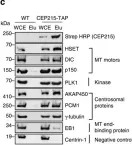During mammalian meiosis, Polo-like kinase 1 (PLK1) is essential during cell cycle progression. In oocyte maturation, PLK1 expression is well characterized but timing of posttranslational modifications regulating its activity and subcellular localization are less clear. Small ubiquitin-related modifier (SUMO) posttranslational modifier proteins have been detected in mammalian gametes but their precise function during gametogenesis is largely unknown. In the present paper we report for mouse oocytes that both PLK1 and phosphorylated PLK1 undergo SUMOylation in meiosis II (MII) oocytes using immunocytochemistry, immunoprecipitation and in vitro SUMOylation assays. At MII, PLK1 is phosphorylated at threonine-210 and serine-137. MII oocyte PLK1 and phosphorylated PLK1 undergo SUMOylation by SUMO-1, -2 and -3 as shown by individual in vitro assays. Using these assays, forms of phosphorylated PLK1 normalized to PLK1 increased significantly and correlated with SUMOylated PLK1 levels. During meiotic progression and maturation, SUMO-1-SUMOylation of PLK1 is involved in spindle formation whereas SUMO-2/3-SUMOylation may regulate PLK1 activity at kinetochore-spindle attachment sites. Microtubule integrity is required for PLK1 localization with SUMO-1 but not with SUMO-2/3. Inhibition of SUMOylation disrupts proper meiotic bipolar spindle organization and spindle-kinetochore attachment. The data show that both temporal and SUMO-specific-SUMOylation play important roles in orchestrating functional dynamics of PLK1 during mouse oocyte meiosis, including subcellular compartmentalization.
Copyright © 2018 Elsevier Inc. All rights reserved.
Product Citations: 2
In Developmental Biology on 15 February 2018 by Feitosa, W. B., Hwang, K., et al.
-
WB
-
Mus musculus (House mouse)
-
Cell Biology
-
Stem Cells and Developmental Biology
In Nature Communications on 18 March 2016 by Chavali, P. L., Chandrasekaran, G., et al.
Numerical centrosome aberrations underlie certain developmental abnormalities and may promote cancer. A cell maintains normal centrosome numbers by coupling centrosome duplication with segregation, which is achieved through sustained association of each centrosome with a mitotic spindle pole. Although the microcephaly- and primordial dwarfism-linked centrosomal protein CEP215 has been implicated in this process, the molecular mechanism responsible remains unclear. Here, using proteomic profiling, we identify the minus end-directed microtubule motor protein HSET as a direct binding partner of CEP215. Targeted deletion of the HSET-binding domain of CEP215 in vertebrate cells causes centrosome detachment and results in HSET depletion at centrosomes, a phenotype also observed in CEP215-deficient patient-derived cells. Moreover, in cancer cells with centrosome amplification, the CEP215-HSET complex promotes the clustering of extra centrosomes into pseudo-bipolar spindles, thereby ensuring viable cell division. Therefore, stabilization of the centrosome-spindle pole interface by the CEP215-HSET complex could promote survival of cancer cells containing supernumerary centrosomes.
-
WB
-
Cancer Research
-
Cell Biology
In Nat Commun on 18 March 2016 by Chavali, P. L., Chandrasekaran, G., et al.
Fig.1.C

-
WB
-
Collected and cropped from Nat Commun by CiteAb, provided under a CC-BY license
Image 1 of 1
